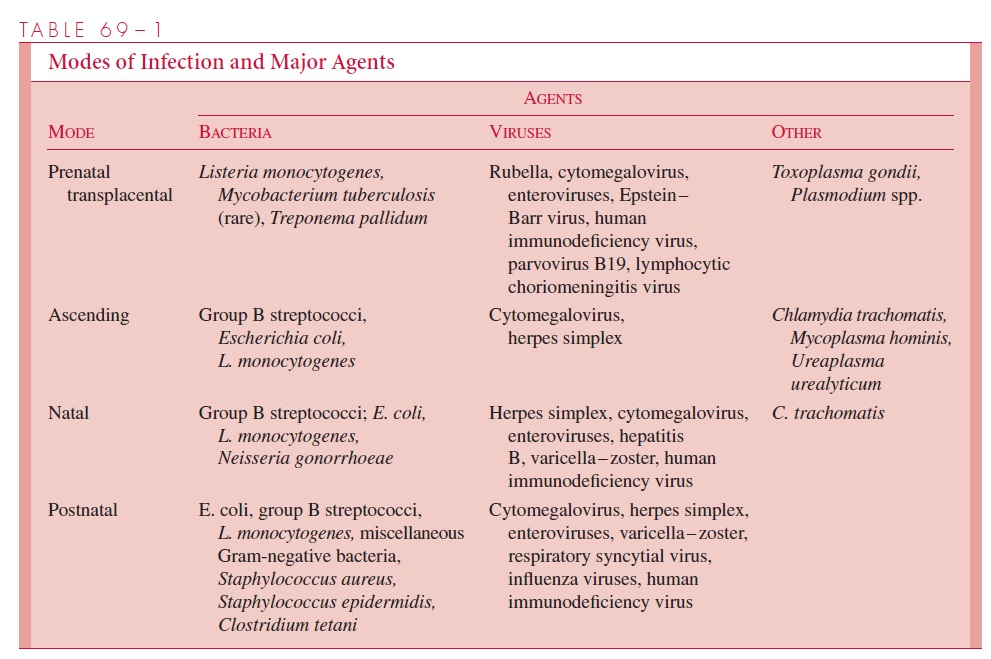Chapter: Medical Microbiology: An Introduction to Infectious Diseases: Infections of the Fetus and Newborn
Common Etiologic Agents - Infections of the Fetus and Newborn
COMMON ETIOLOGIC AGENTS
Table 69 – 1 lists the major pathogens affecting the fetus and newborn, according to the usual modes of acquisition. Some, such asMycobacterium tuberculosis and Plasmodium species, are exceedingly rare, but require consideration in certain clinical and epidemio-logic circumstances. It should also be noted that some pathogens that commonly affect older infants and children are quite rarely observed in newborns. This phenomenon is par-tially attributable to the protective effect of maternally derived immunity to organisms such as Haemophilus influenzae type b, Streptococcus pneumoniae, Neisseria meningi-tidis, and mumps and measles viruses but also reflects less opportunity for exposure tosome agents early in life. Some organisms, such as Staphylococcus aureus, rarely cause prenatal or natal infections but commonly colonize in the postnatal period and most often cause disease after the first week of life.

If one views the fetus as existing normally in a protected, “germ-free” intrauterine en-vironment before emerging into a milieu of potential pathogens, it is easy to see how the newborn can be colonized with the first organisms encountered, some of which can cause disease. The external pathogenic flora initially acquired can include organisms frequently present in the maternal genital tract, such as group B streptococci and Escherichia coli, as well as less common Neisseria gonorrhoeae, Listeria monocytogenes, Chlamydia tra-chomatis, and herpes simplex virus, all of which are important causes of natal infection.
Postnatal infections may be late manifestations resulting from prenatal or natal colo-nization by pathogens such as those mentioned previously, but additional organisms may be acquired after birth. Particular risks include contamination of the nursery environment by a variety of Gram-negative bacteria, staphylococci, and some common viruses (see Table 69 – 1) and attendants who are infected with or carrying such organisms. The risks are increased if the infant is born prematurely or otherwise physically compromised, and they are amplified by prolonged hospitalization and invasive procedures such as respira- tory intubation, mechanical ventilation, and intravenous treatment, as well as by blood or blood product transfusions.
Related Topics